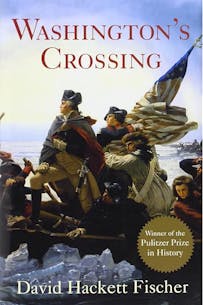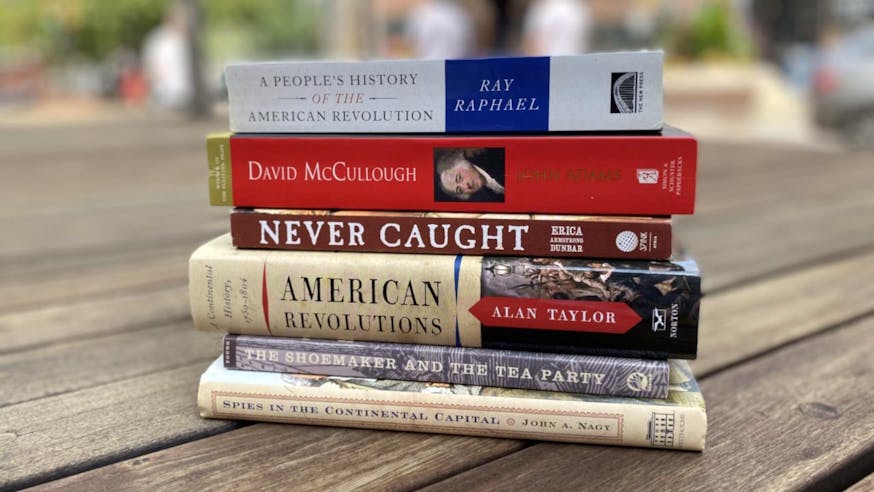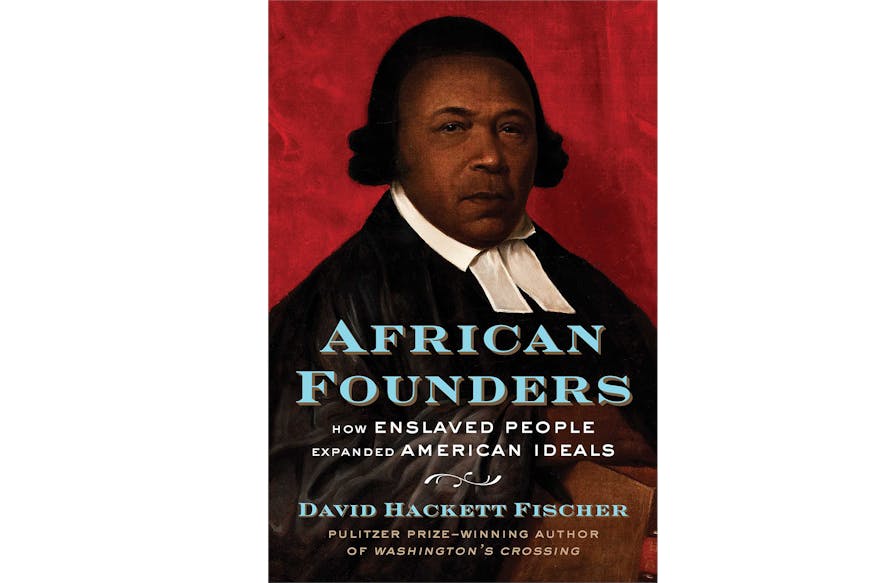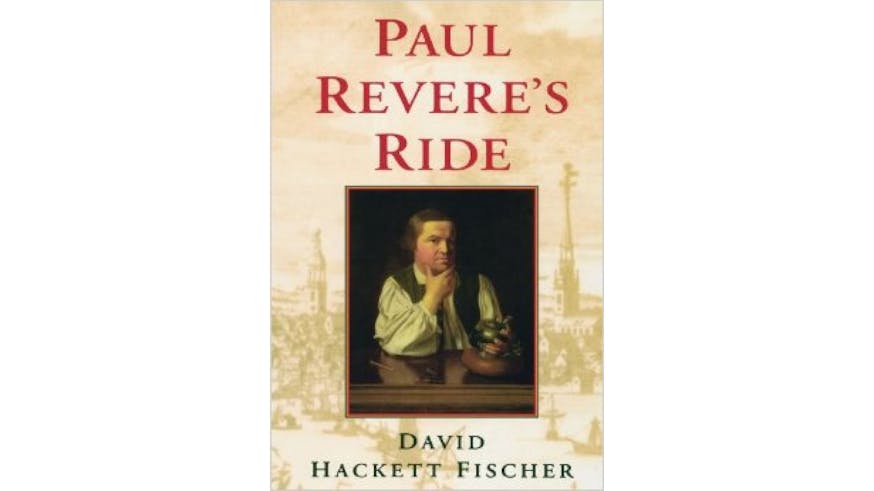Read the Revolution
Washington's Crossing
December 27, 2023
Purchase the book from Oxford University Press.
Thanks in large part to the 1851 painting by Emmanual Leutze, General George Washington leading the Continental Army across the Delaware River on Dec. 25, 1776, is one of the most well-known stories of the American Revolution. In Washington’s Crossing, Pulitzer Prize winner David Hackett Fischer tells the story in detail, introducing readers to the armies that met in battle at Trenton. Fischer explores the stages of the crossing, which marked the start of what has come to be known as “the 10 Crucial Days,” as Washington led his men to turn the tide of the war in favor of the Americans.
Fischer’s use of the words of those who lived it is gripping. He provides the perspective of these eyewitnesses as they marched toward Trenton. In this excerpt, Fischer uses the account by fifer John Greenwood to delve into the details of the crossing, which did not go as planned, despite Washington’s meticulous planning.
Excerpt
Early on Christmas morning, the American camps along the Delaware River began to stir. Clouds of white smoke rose from the kitchen fires where the women of the army were hard at work, with orders to prepare “three days rations ready cooked.” Company officers and sergeants were instructed to see that every man had “arms, accoutrements and ammunition in the best order.” Fresh flints were issued for each musket, with plenty of black powder and ball. A few lucky soldiers got the new blankets that had just arrived from Robert Morris and were much wanted on that winter day.
The ground was white with frozen snow. For much of the morning the sun warmed the air a little, but temperatures stayed below freezing. In the shade one felt a damp cutting cold that chilled a man to his bones. At midday, the westerly wind shifted to the northeast, and this army of farmers and fishermen could read the signs of a change in the weather. During the afternoon they could feel it in the wind that was rising in the trees, and they could see it in the high thin clouds that raced across the sky.
Sign Up
Get biweekly Read the Revolution featured excerpts right to your inbox.
[…]
About four o’clock in the afternoon an American drum began to beat; then another and another. Up and down the Delaware River, regiments turned out for an evening parade. They had done it often before, but this muster was different. John Greenwood remembered that every man in his regiment was ordered to carry a musket, even officers and musicians such as himself. Greenwood was a fifer. He recalled, “I then had a gun, as indeed every officer had.” All were given as much ammunition as they could carry. “Every man had sixty rounds of cartridges served out to him,” Greenwood wrote. “I put…some in my pockets and some in my little cartridge box.”
Greenwood wrote that “none but the first officers knew where we were going or what we were going about, for it was a secret expedition.” His regiment knew even less than the others, for they had arrived two days ago from the northern frontier. In October, they had been fighting near Montreal. By November, they were living in misery at Ticonderoga. Of five hundred men who entered Canada, only one hundred remained. Most had come down with the “flux or camp distemper,” and many had died “like rotten sheep.” When the regiment marched south to Pennsylvania, Greenwood himself fell ill with the “fever and ague” of malaria. “What I suffered on the march cannot be described,” he wrote. “They who were with us know best about these things, others cannot believe the tenth part, so I shall say nothing further.”
[…]
Washington and his staff had planned the operation in great detail. He meant to cross the Delaware River on Christmas night and attack Trenton a little before dawn, with all the strength in his command. Field commanders were ordered to lead their men across the river in four separate movements, all at the same time.
[…]
No sooner had these forces mustered on Christmas afternoon than Washington’s schedule began to come apart. The old army saying that “no battleplan survives contact with the enemy” is only half correct. Most plans do not survive contact with one’s friends. Washington’s plan miscarried that way during the first hour of the operation. He had wanted the army to march from their separate camps toward three crossing points on the Delaware River and assemble away from the water’s edge, out of sight from New Jersey. It was urgently important to his plan that the troops should reach their assembly areas before sunset (about 4:41 p.m. that day), so that they could move to the river at nightfall and cross as soon as the sky was dark enough to hide their movements…
The schedule failed even before the march began. John Greenwood recalled that his regiment did not leave camp until after four o’clock, about half an hour before sunset. They were in Newtown, Pennsylvania…Many were ill and more than a few were without shoes…Even so, Greenwood’s regiment were among “the first who crossed.”
[…]
While Washington watched gloomily, the rest of the army got ashore. The men were shaking with cold and wet to the skin but in remarkably good spirits. Greenwood remembered that “we had to wait for the rest, and so began to pull down the fences and make fires to warm ourselves, for the storm was increasing rapidly.” He added many years later, “I perfectly recollect, after putting the rails on to burn, the wind and the fire would cut them in two in a moment, and when I turned my face toward the fire my back would be freezing…. By turning round and round I kept myself from perishing before the large bonfire.” In those miserable circumstances, John Greenwood was struck by a feeling of elation that the men shared. He wrote, “The noise of the soldiers coming over and clearing away the ice, the rattling of the cannon wheels on the frozen ground, and the cheerfulness of my fellow-comrades encouraged me beyond expression, and, big coward as I acknowledge myself to be, I felt great pleasure, more than I do now in writing about it.”
David Hackett Fischer, Washington’s Crossing (New York: Oxford University Press, 2004), 206, 207-208, 208-209, 219-220.
Tags
Learn More

Read the Revolution

African Founders

